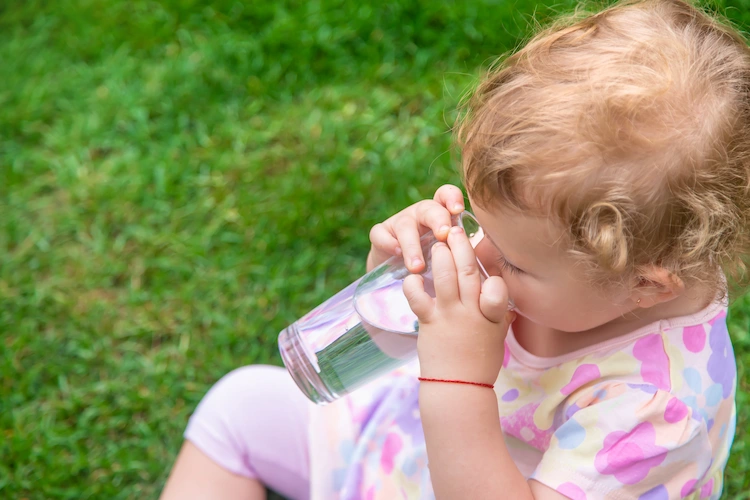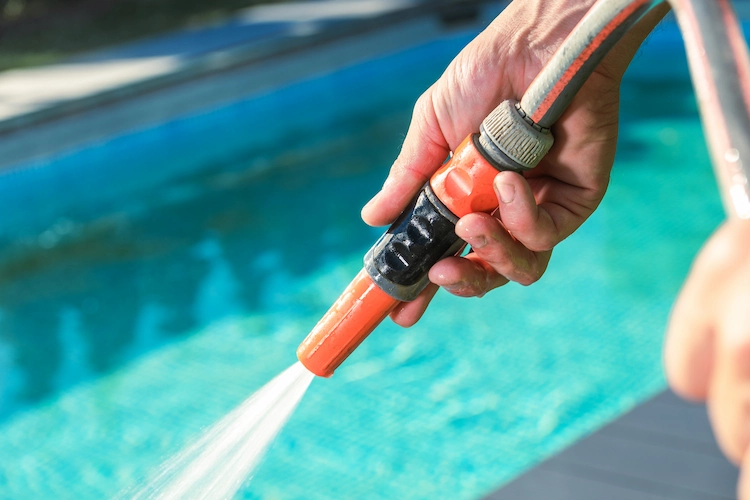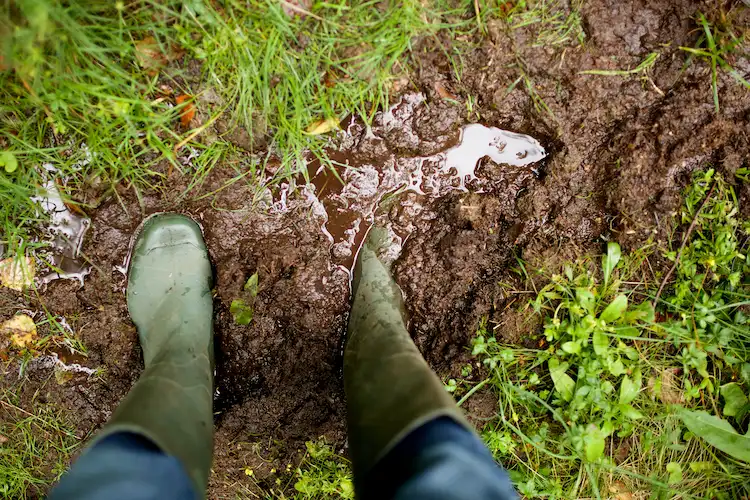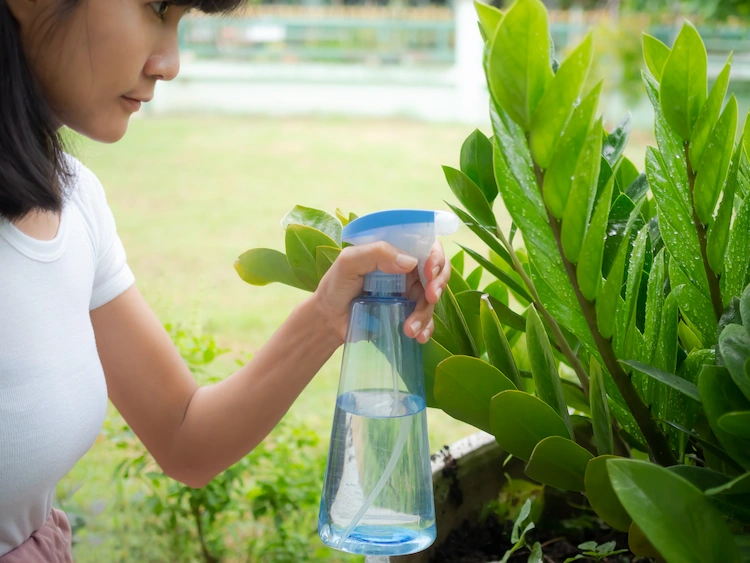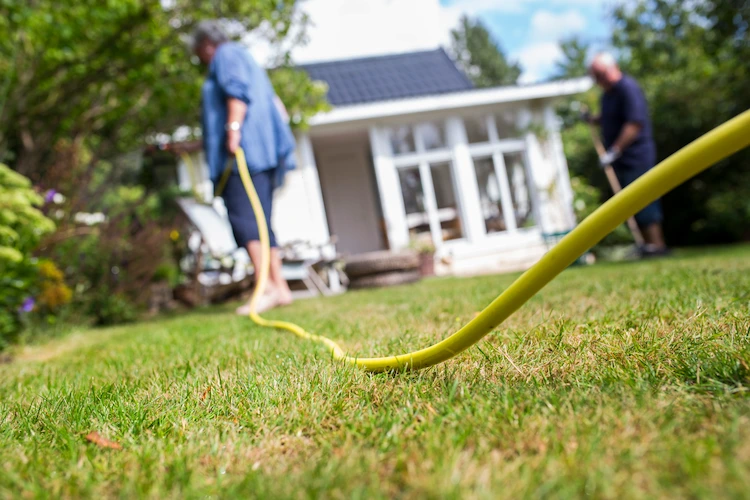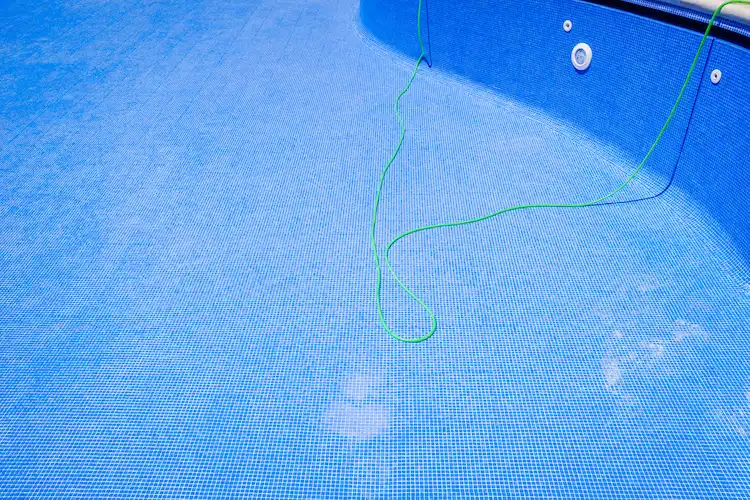Is it possible to use pool water in the garden? What happens if you water plants with chlorinated water? Let’s find out!
Water-saving measures are a central topic of climate change, with many garden owners wondering whether they can water plants with chlorinated water? With water shortages, regulatory changes such as pool bans and limited lawn watering are on the horizon. This motivates some people to look for ways to reuse pool water to irrigate their gardens. But is this even possible and is it okay to water plants with chlorinated water? Below you will find some useful information and tips to help you avoid related mistakes.
What Happens if You Water Plants with Chlorinated Water?
Besides chlorine, pool water may also contain other chemical substances such as bromine, cyanuric acid and oxidizing agents. Moreover, it remains in the pool, which requires regular cleaning of the pool. This allows you to free pool water from pollutants of organic and non-organic origin. Such treatment is carried out with various chemicals. Now, can such an irrigation method be beneficial for the plants in the garden or would it cause significant damage to the crops? There’s no question that this saves water, but is it really suitable for irrigation?
At first glance, pool water appears to be harmful to most plant varieties unless you reduce the chlorine content. This is usually used to eliminate bacteria and algae in the pool, since chlorine acts as a disinfectant. However, it also oxidizes other materials or contaminants and, at high levels, can also damage plants. Chlorine is harmless in small amounts, and tap water is usually chlorinated. However, an excess can lead to burns of young plant leaves. Furthermore, too much chlorine can turn vegetables yellow and prevent seedlings from rooting and germinating. In addition, at high concentrations, when you water plants with chlorinated water, the chemical also has a detrimental effect on the growth process. However, there is a way to prevent this by considering some simple but thoughtful strategies.
How Does Chlorine in Small Amounts Affect the Plants?
If you water plants with chlorinated water when the chlorine level is low, it can even be beneficial for them. The substance in small quantities proves to be an insecticide and chlorine eliminates pests or other bacteria and mold. However, the negative or positive effects of chlorine are strongly related to the concentration and the plant variety. Most plant species are resistant to small amounts of chlorine, although some crops such as grapes or avocados cannot withstand it. Even if you water them with pool water that has a low concentration of the chemical, it will be toxic to them.
The hydrogen peroxide contained in the pool water can also have a positive effect on the garden soil and the plants growing in it. It is able to bring the composition of domestic water closer to the natural composition that plants receive from melting snow and precipitation. The atomic oxygen contained in the substance not only contributes to the disinfection of the soil, but also provides oxygen to cultivated plants.
Can You Water Lawns and Plants with Chlorinated Water by Reducing the Chlorine Content?
If you have treated your pool water with chlorine, it is perfectly possible to use it to irrigate seedlings of tomatoes and other varieties such as cucumbers, garlic, onions and flowers. It would even make sense to spray the leaves of garden and house plants with chlorinated water to provide them with a protective film against pests and plant diseases. However, if there are high concentrations of chlorine in the pool, it is advisable to wait a few days for them to decrease before you water plants with chlorinated water.
In addition, lawns tolerate chlorine water and you can use it to water your garden areas or vegetable garden. If you clean your pool by ozonation, pool water is also beneficial to plants. This is because ozone quickly takes the form of dissolved oxygen, which has a positive effect on most crops. As for lawns, pool water with reduced chlorine levels does not harm the grass as it is not enough to interfere with its nutrient uptake. Since lawns are also typically exposed to constant sunlight, this also reduces the effects of potentially high levels of chlorine in pool water. Otherwise, you can follow some of the following steps to lower its concentration.
How Can You Reduce the Chlorine Content in Pool Water?
As written above, you should not add any chemicals to your pool for about a week before watering. In addition, you can use three methods to remove chlorine from pool water. These include evaporation, filtration and chemical neutralization. If you want to evaporate chlorine it can be a bit time consuming but beneficial as you don’t have to spend any money to do it. All you have to do is let the pool water evaporate under the sun so that chlorine turns into a gas.
To get rid of chlorine in a chemical way, you can use potassium metabisulfite (E-224), which is available in the form of tablets. About 21 gallons/80 liters of chlorine can be removed from water with one tablet, and this is done very quickly. When it comes to the filtration method, a process called reverse osmosis is used. This allows you to filter pool water using a semi-permeable membrane and get rid of any impurities. Reverse osmosis is an equally quick method, but it can be costly. Such a filter system is usually installed on site and is more suitable for larger or public pools or factories.
How Can You Water or Spray Plants with Chlorinated Water?
Most plant varieties benefit from micronutrients to thrive, although they require varying amounts. The nutrients needed in small amounts are the micronutrients, with chlorine being a vital micronutrient for almost all plants. New research shows that pool water can be a potential source of nutrients. It also contains zinc and bromine, and when the effect of the chlorine in the water is reduced, these nutrients can prove beneficial to plants. If you want to try such a method of watering in different ways, here’s what to do:
- If you water plants with chlorinated water, you can use a spray bottle and fill it with pool water. However, you should clean and disinfect it beforehand.
- Then use the methods above to reduce the chlorine level. After filtration, the bottle will not get clogged when spraying.
- Try spraying the plant with pool water on both the top and bottom of the leaves. Treat the topsoil with it too.
- In order for the plants to optimally absorb water and nutrients, you should water or spray your plants with chlorine water in the morning or evening. Otherwise it will evaporate in the heat.
- In addition, you can also use shallow and smaller containers that are slightly wider than your flower pots and place the plants in them.
- Then aim for a water level on the side of the flower pot that is 1 to 1.5 inches high when you water plants with chlorinated water.
- First, you can leave the plant in the pool water for about 20 minutes and then test the soil for moisture with your fingers.
- If the soil is moist but not soggy, you can remove the pot and place the plant so that excess water can drain away.


